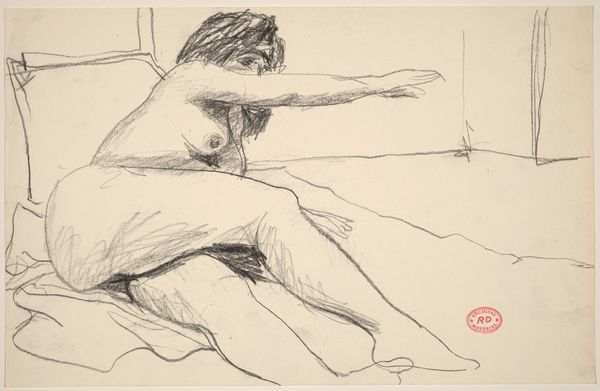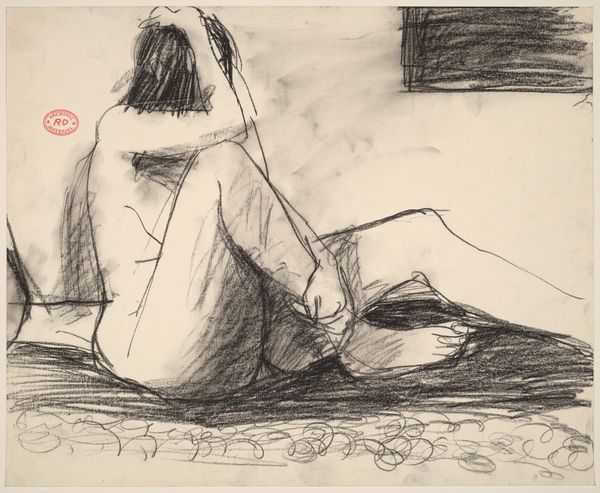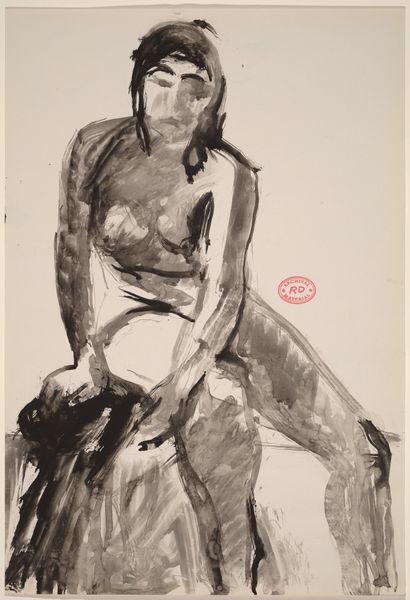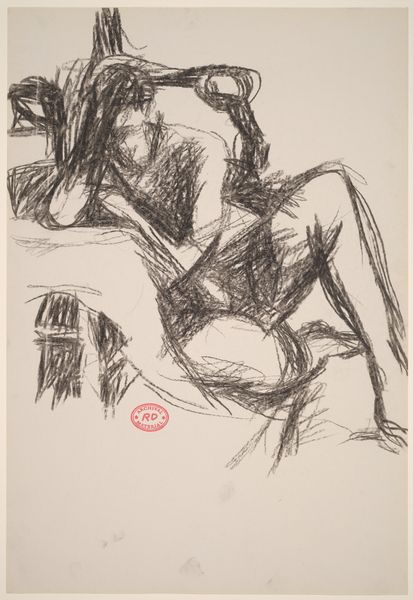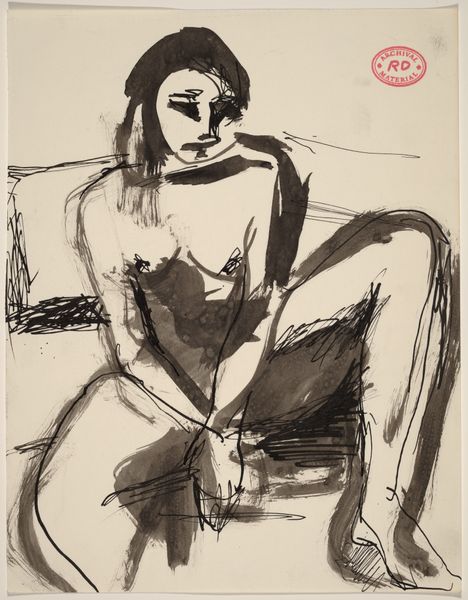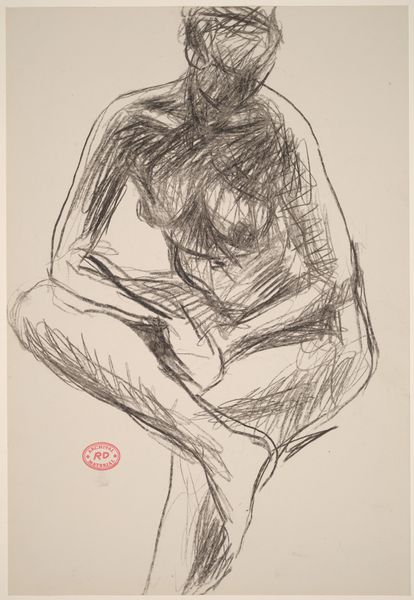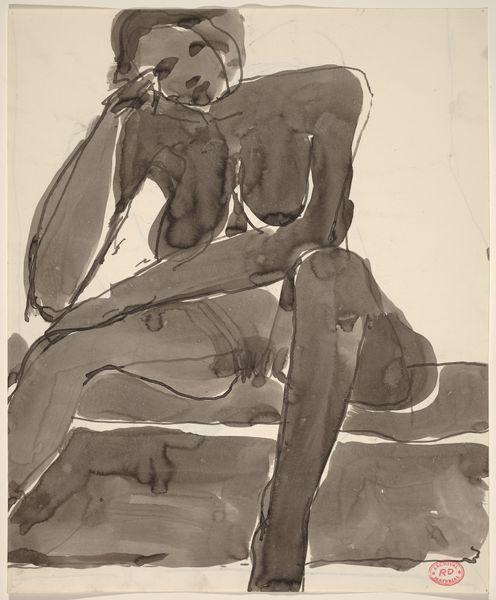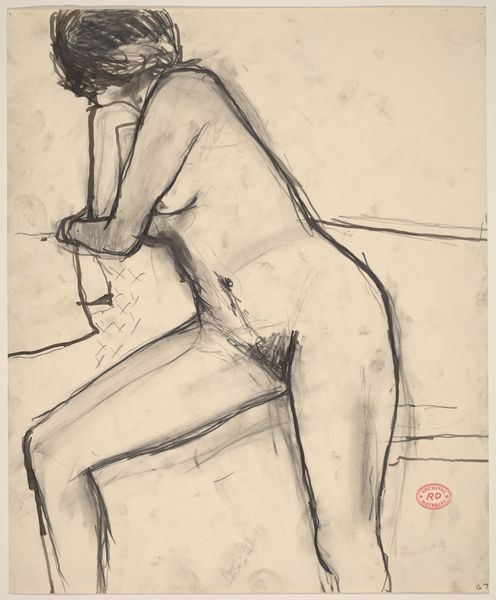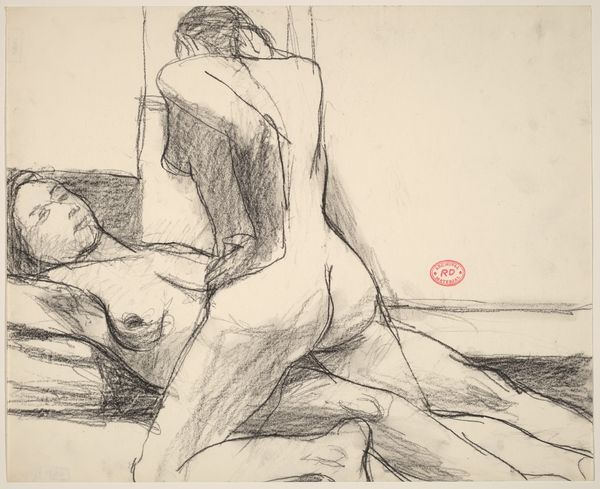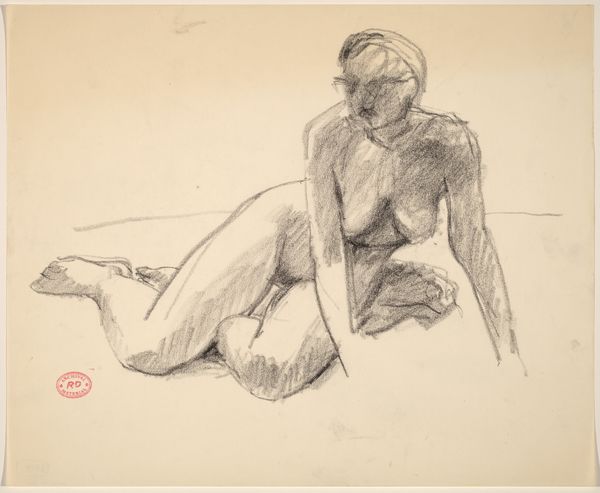![Untitled [seated nude resting her head and arm on a draped stand] by Richard Diebenkorn](/_next/image?url=https%3A%2F%2Fd2w8kbdekdi1gv.cloudfront.net%2FeyJidWNrZXQiOiAiYXJ0ZXJhLWltYWdlcy1idWNrZXQiLCAia2V5IjogImFydHdvcmtzLzRiODExOTg2LWEyYjgtNDNkMS04ZmFjLTA3MWFkMGYxNmE0OC80YjgxMTk4Ni1hMmI4LTQzZDEtOGZhYy0wNzFhZDBmMTZhNDhfZnVsbC5qcGciLCAiZWRpdHMiOiB7InJlc2l6ZSI6IHsid2lkdGgiOiAxOTIwLCAiaGVpZ2h0IjogMTkyMCwgImZpdCI6ICJpbnNpZGUifX19&w=3840&q=75)
Untitled [seated nude resting her head and arm on a draped stand] 1955 - 1967
0:00
0:00
drawing, ink
#
portrait
#
abstract-expressionism
#
drawing
#
charcoal drawing
#
bay-area-figurative-movement
#
ink
#
abstraction
#
line
#
portrait drawing
#
nude
Dimensions: overall: 35.2 x 42.9 cm (13 7/8 x 16 7/8 in.)
Copyright: National Gallery of Art: CC0 1.0
Curator: Welcome. Today, we’re examining a drawing by Richard Diebenkorn, created sometime between 1955 and 1967. It's listed as "Untitled," but depicts a seated nude, resting her head on her arm, which is draped across a stand. Editor: There's such a sense of quiet exhaustion about this piece. The lines are bold, almost brutally simple, and yet they capture a profound vulnerability. The washes of ink create a very dramatic contrast against the starkness of the bare paper. Curator: Yes, it's interesting how Diebenkorn uses line and wash to abstract the figure. Remember, he was moving toward Abstract Expressionism during this period, and figuration became less about strict representation and more about emotional and psychological evocation. These were years of considerable social upheaval, and artistic angst about purpose. Editor: Absolutely. The composition itself seems to reinforce that sense of unease. The figure is cut off, incomplete, almost dissolving into the background, though she still has significant substance from the deep charcoal coloring the midtones in her chest and legs. I get the feeling that it’s not meant to provide us a comforting image. It demands attention and discomfort. Curator: And Diebenkorn’s move towards abstraction freed him from the constraints of academic figure drawing and the associated socio-cultural expectations. Instead, he uses the figure as a vehicle to explore form, light, and shadow – essential pictorial concerns for a painter deeply engaged with the legacy of modernism. Remember, too, that he later incorporated these skills into the very well known "Ocean Park" series. Editor: It’s intriguing to consider how those bold lines and planes, that emphasis on abstract shapes, anticipated those later, more well-known, works. In this seated figure, we get the raw expressive power of his process distilled, though I cannot help but wish to know her story as I ponder her exhaustion. Curator: Art like this drawing isn't about narrative but rather the act of observing and feeling. Diebenkorn challenges our expectations about what a nude should be and how it functions within the broader culture. Editor: Looking closer at how Diebenkorn lets the ink bleed and pool, it also speaks to the physicality of the artistic process – the vulnerability of the medium itself laid bare. Curator: Indeed, and how well that informs an interpretation of the subject. A powerful and insightful statement for that era! Editor: Absolutely. This piece reminds us that vulnerability and beauty can often be found hand-in-hand, expressed through an understanding of lines, colors and composition.
Comments
No comments
Be the first to comment and join the conversation on the ultimate creative platform.

